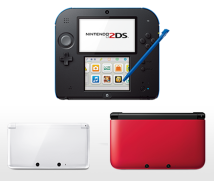1. A Nintendo 3DS Theme Song?
Today I’ve gathered together the people who worked tirelessly in bringing the Nintendo 3DS system to its current form. First, please introduce yourselves.
I’m Koshiishi from the Mechanical Design Group of the Research & Engineering Department. I led mechanical design in development of the Nintendo 3DS system. Several people were involved in mechanical design this time, but Goto-san, who was in charge of the actual drawings of the designs, and I are here to represent the group. I’m glad to be here.
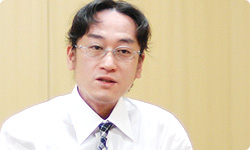
I’m Goto, also from the Mechanical Design Group of the Research & Engineering Department. As Koshiishi-san just mentioned, I was in charge of actually drawing the design of mechanisms in this project. I was involved from concept design early on until mass production design at the end.
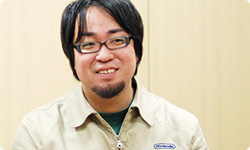
Some of our readers may not be sure what mechanical design is. Could you please explain?
Sure. It’s hard to sum up, but I listen to the desires of the exterior designers and lay out the many components in the system and pack it all in as best as possible.
In other words, the exterior design team proposes a form they want the system to take, and in order to make mass production of it possible, you think about the structure of its parts and how those parts can be arranged for ease in assembly, all the while verifying where it is physically strong or weak.
Yes, that’s it.
I’m Akai from the Product Development & Planning Group in the Research & Engineering Department. In order that development of the Nintendo 3DS system ran smoothly, I worked together with the Design Group and Mechanical Design Group in taking the product from design to commercial product. I lent support to everyone here.
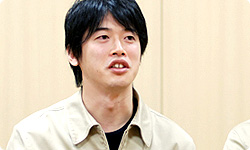
Up until just before this project, you were in the Product Evaluation & Engineering Department at the Uji Plant, where you verified the reliability and the manufacturability of products.
Yes. I was at the Uji Plant for a long time and I’m familiar with the circumstances surrounding manufacture, so this time, on the development side, I helped smooth communication between the manufacturers and developers.
Now, would you two designers please introduce yourselves?
I’m Ehara from the Design Group of the Research & Engineering Department. I joined this project partway through. I was in charge of the exterior design of the hardware and was involved up until mass production.
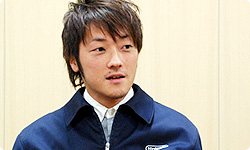
I’m in the Design Group as well. I was in charge of the exterior design too, and like Goto-san from the Mechanical Design Group, I was involved from concept design and I was involved until the mass production kicked off together with Ehara-san.
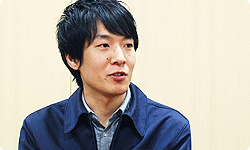
When designers design something new, do you draw on paper what you have in mind?
It depends on the person, but I do some rough sketches that no one else could understand in a notebook I have at hand.
How about you, Ehara-san?
I listen to music.
Huh?
What?
In order to think up a design? (laughs)
Yeah. First, I have a vague image of what form it should take, and then I look for music that fits that image. I worked on the Nintendo DS Lite1 and Nintendo DSi2 systems and they each have their own songs. 1Nintendo DS Lite: A slim version of the Nintendo DS handheld game system. It was released in Japan in March 2006. 2Nintendo DSi: A handheld game system released in Japan in November 2008 as an upgrade model of the Nintendo DS Lite. It possesses various new features, such as bigger LCD screens and two cameras.
The Nintendo DS Lite and Nintendo DSi systems have their own songs, too?
(laughs)
You were also central to the industrial design of those systems. When you designed those, you had your own theme songs for them, as well?
Yes, and it’s because the conditions of industrial design change all the time.
Even when you have something you want to express through a design, you encounter a variety of problems during development, such as whether you can actually realise it or manufacture it, and sometimes you have to change the design against your personal will.
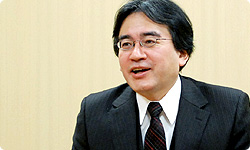
Yes, that happens all the time. So, in order not to lose the core of the first image that I have of it, I determine a song early on and listen to it over and over at home while I relax.
You listen to it again to call yourself back to the original inspiration?
Yes. And when I do, sometimes I come up with different approaches that I haven't thought of before.
Wow. I never imagined that a design could come from music! I’d love to ask what the theme song for Nintendo 3DS was, but I’ll leave that to everyone’s imagination. (laughs)
(laughs)
About how many designers were involved with design of the Nintendo 3DS system?
Including everyone who worked on accessories like the charging cradle, stylus, Game Card case and artwork for items like the packaging and operations manual, there were seven.
How many years have you been at Nintendo?
This is my fifth year.
Even though this is only your fifth year, you were involved in designing this product from its concept design stage.
Yes. This was my first time to work on exterior design, so I felt a lot of pressure. Since this was a new model, there was a time when, as a designer, I struggled with how to present a sense of newness.
It’s difficult to find the right balance between keeping certain design elements and challenging others.
That’s right. When I joined the project, it had already been decided that we would have two screens, with one being a Touch Screen, and we couldn’t have it feel very different in terms of its sheer size, so no matter what we did, when someone opened it for the first time and saw two screens, it would make an impression like previous systems. It was difficult figuring out how to make it feel new.
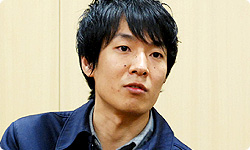
Ehara-san, when did you join the project?
About November of 2009. Until then, I was supporting the launch of mass production for the Nintendo DSi XL system.3 3Nintendo DSi XL: A handheld game system with the same features as the Nintendo DSi, but with larger screens. It was released in Japan in November 2009.
What impression did you have of the project when looking at it from the outside?
I thought, “That looks tough.”
Then you got pulled in! (laughs)
Yes. Ever since the Nintendo DS Lite system, our taste in design and approach to design hadn’t changed much, and when I saw the Nintendo 3DS prototype that Miyatake-san had been central in designing, I felt like it adhered to previous designs without making much of a new impact. Of course, that was one possible road to take, but I had worked on design of the Nintendo DS Lite and Nintendo DSi systems, so I began to feel as if it were my responsibility to break with the past.
You mean that you came into this project with the feeling that it was your role to break with tradition since it was you who had created the basic design for the series ever since the Nintendo DS Lite system?
Yes. I thought perhaps it was my role to make a lot of stuff that would never get an OK. So after joining the project team, I did a lot to stir things up.
In other words, you felt that everyone was stuck on the original design that you had made, so you thought you would propose a bunch of designs that wouldn’t be approved in order to upset their balance and get them moving toward something new.
Yes. I thought if I didn’t make a break, we would continue in the same vein.
